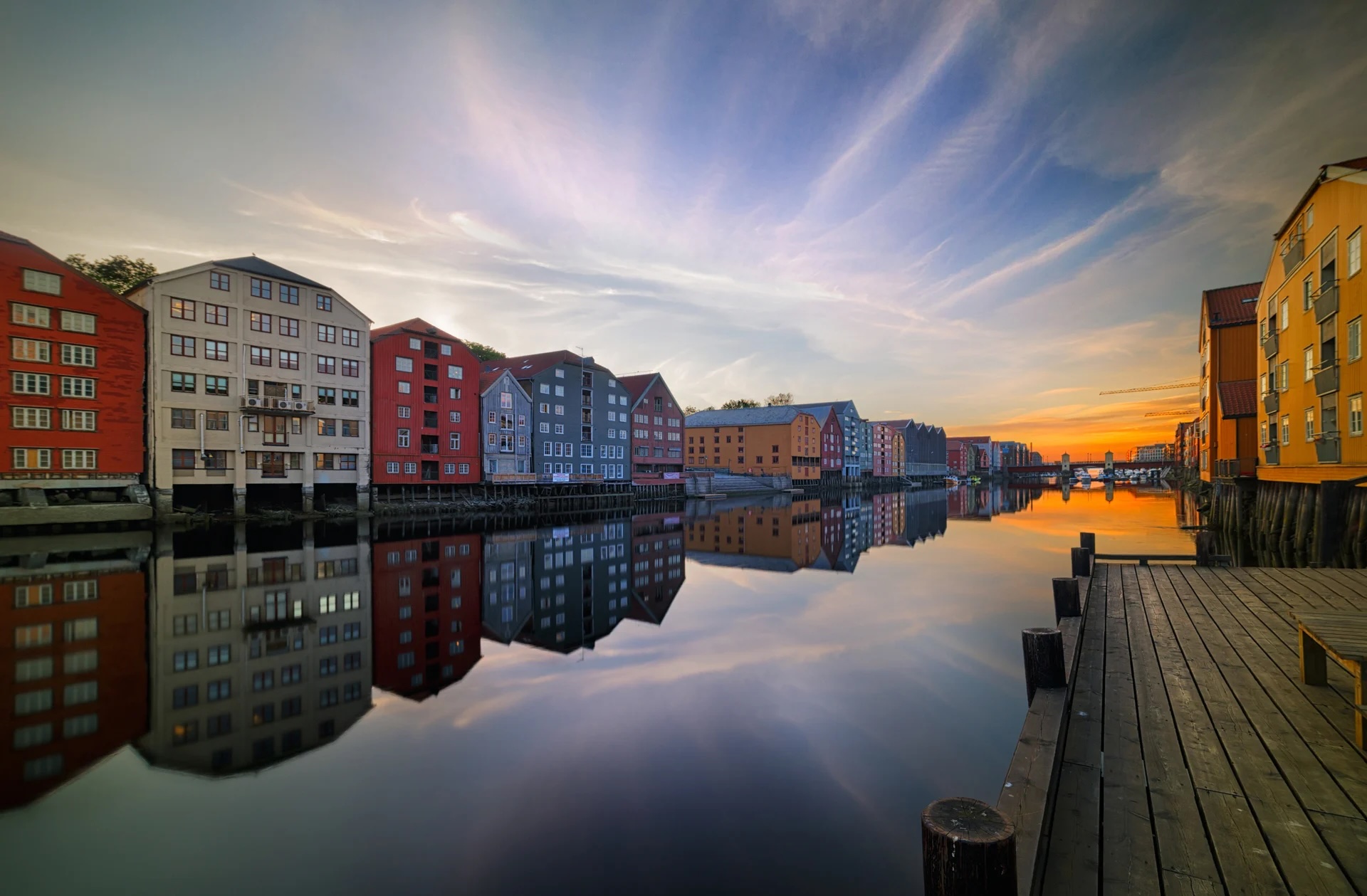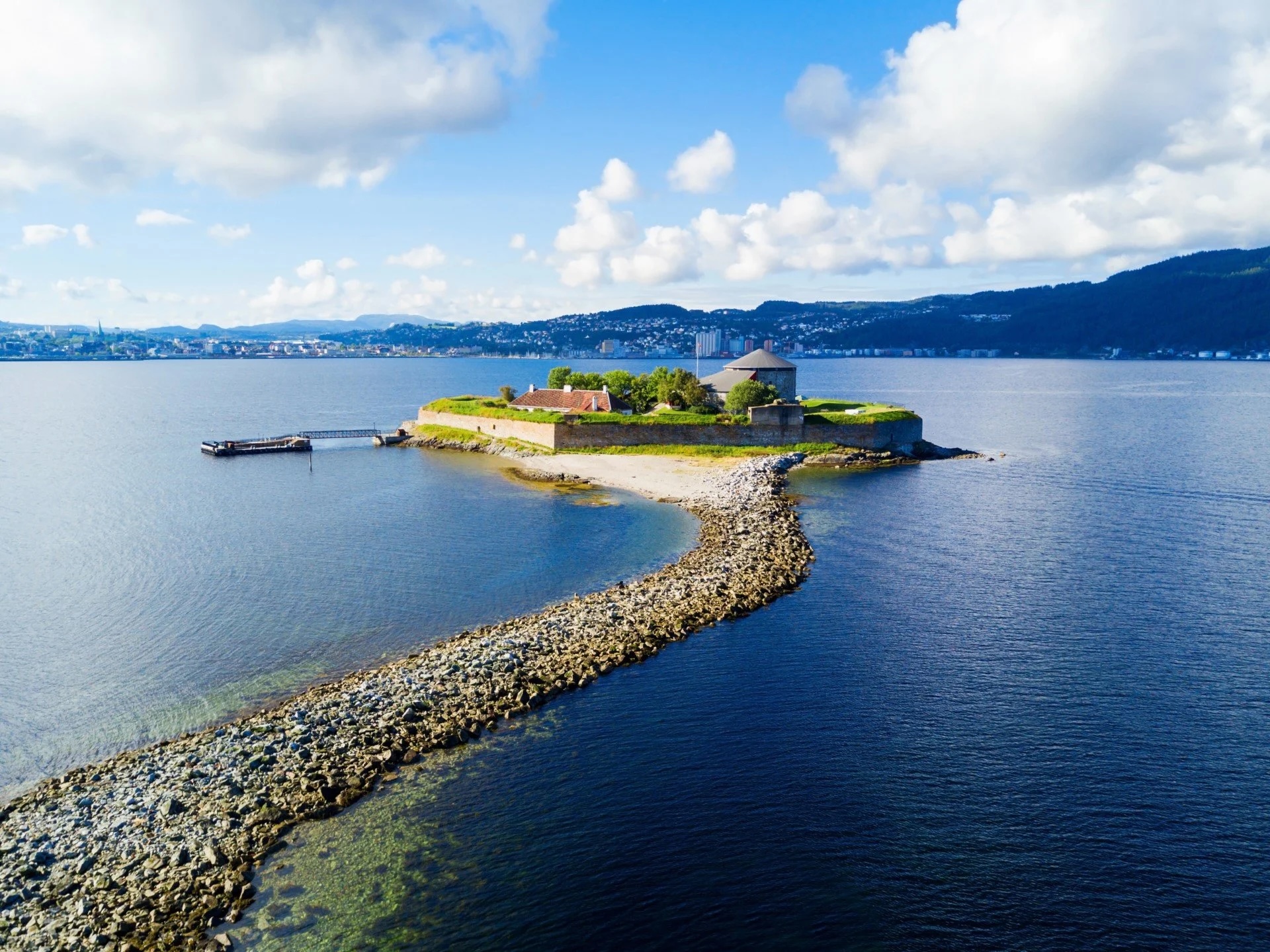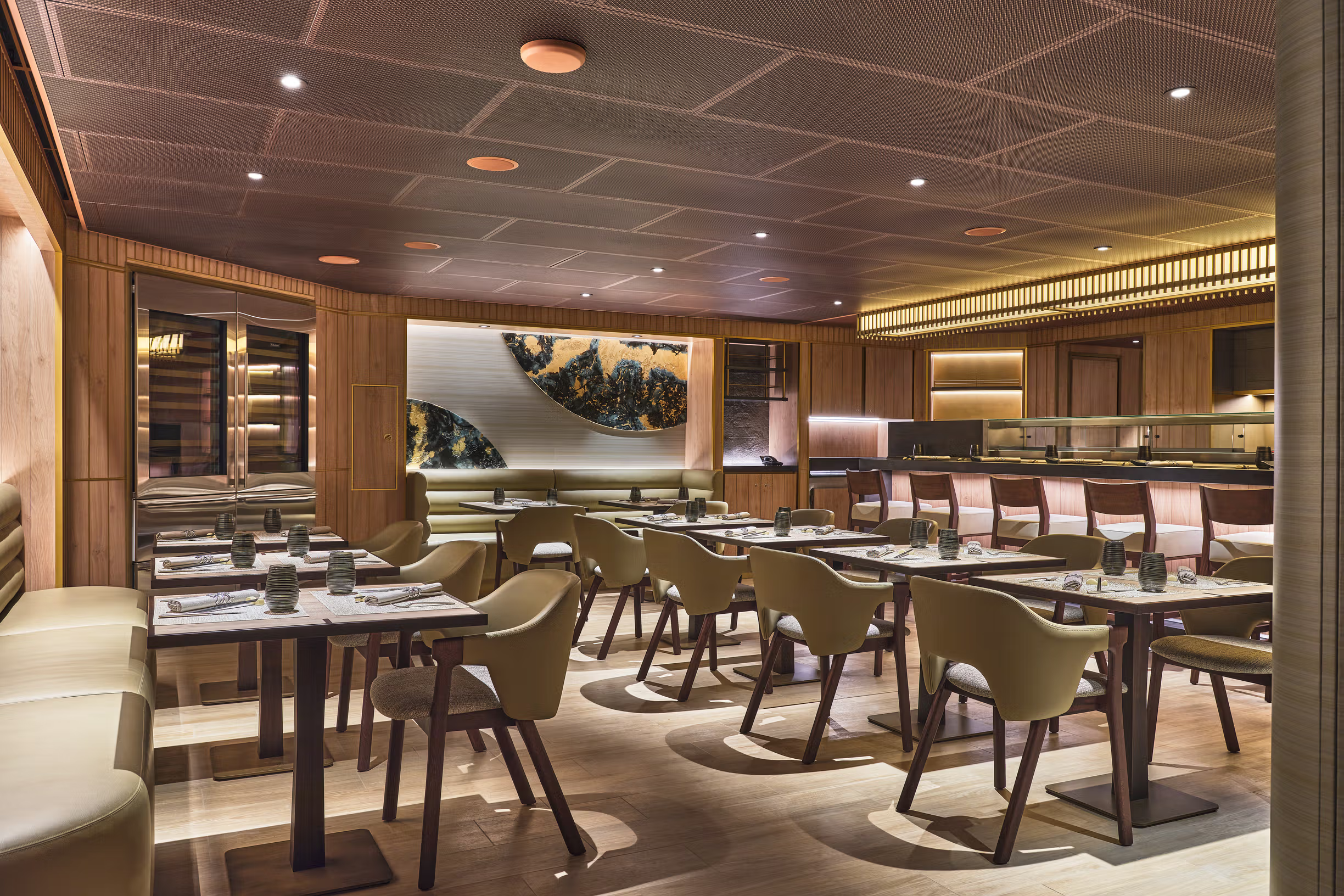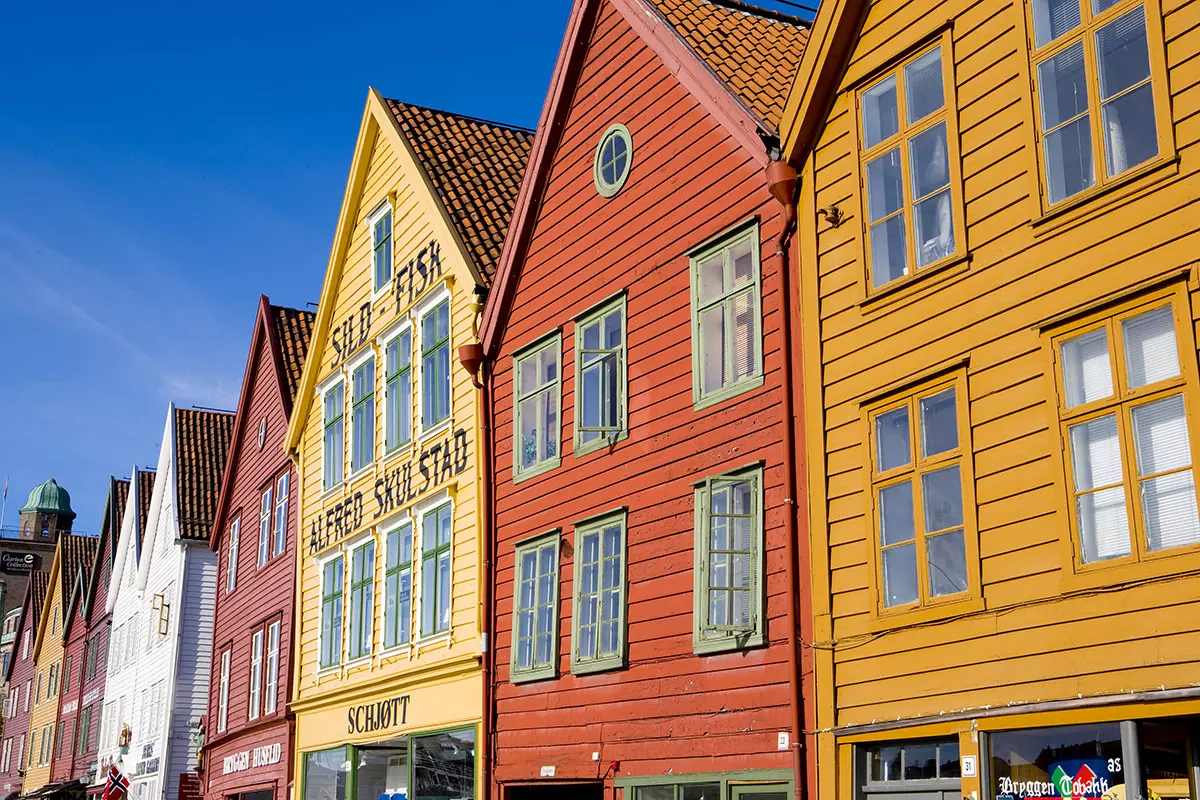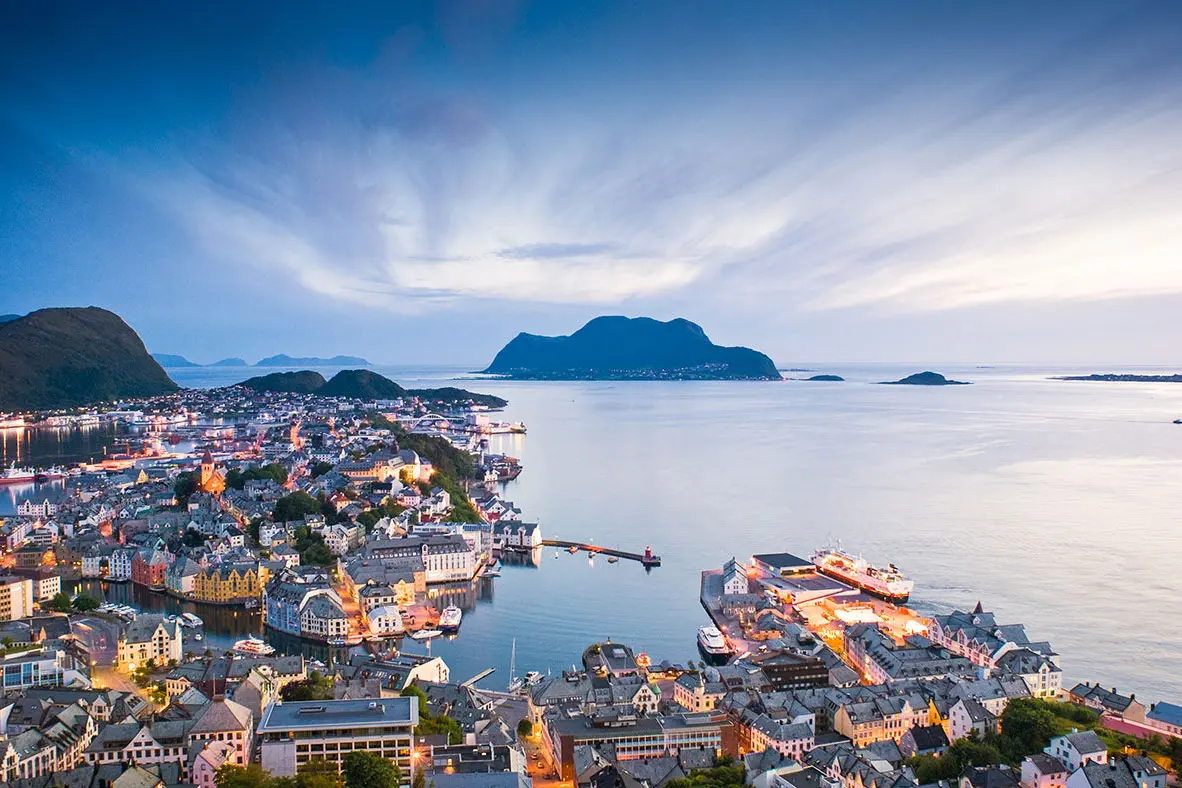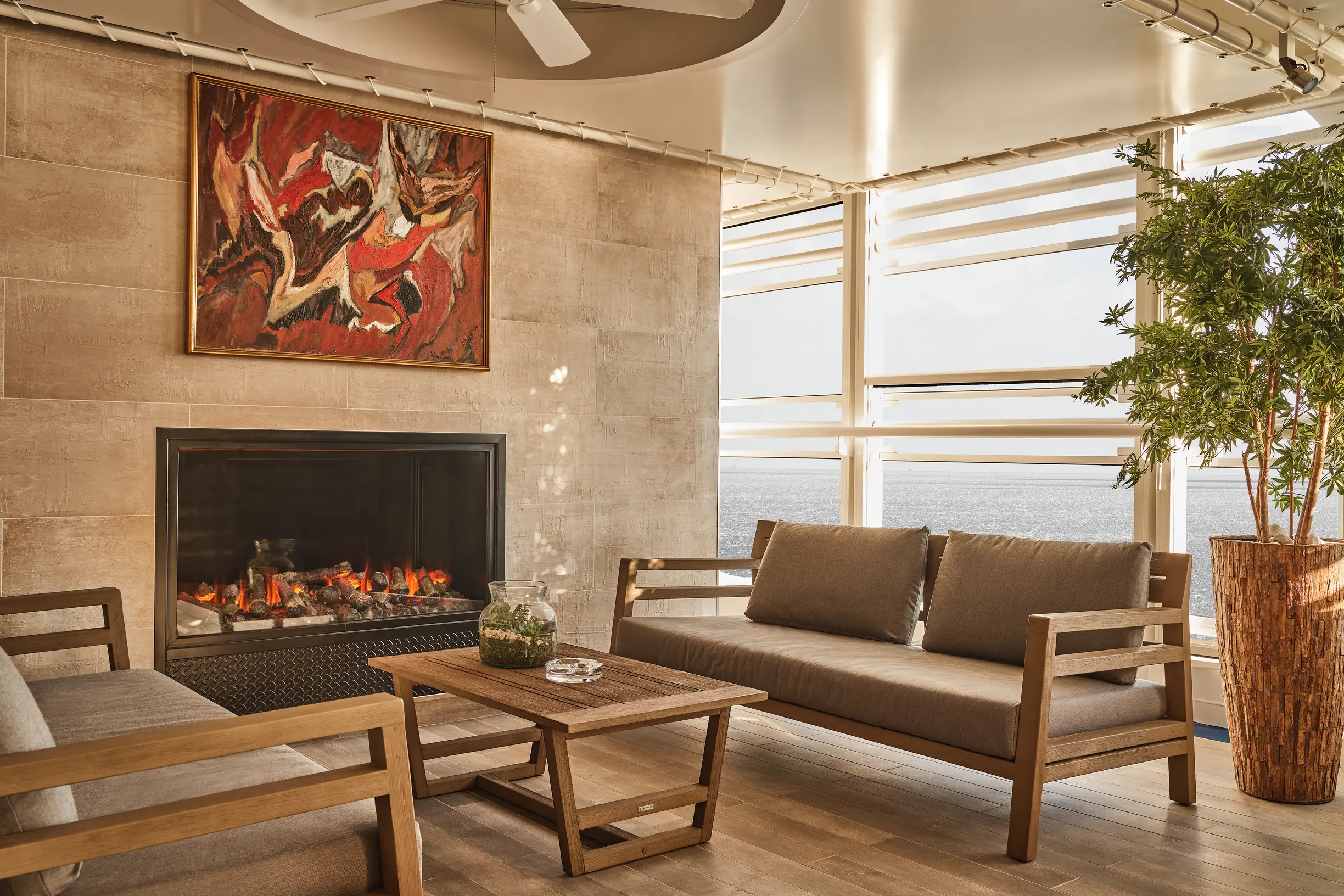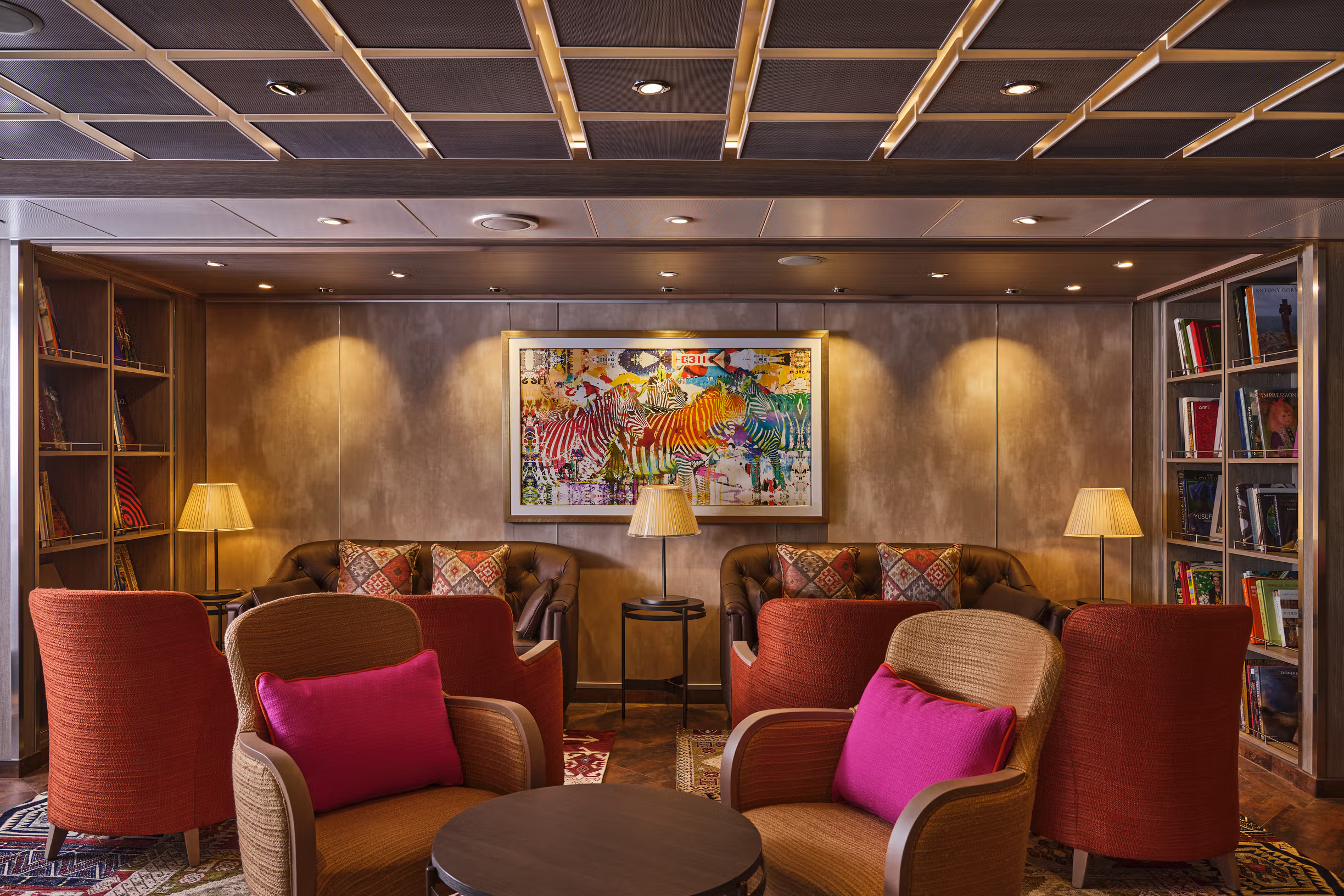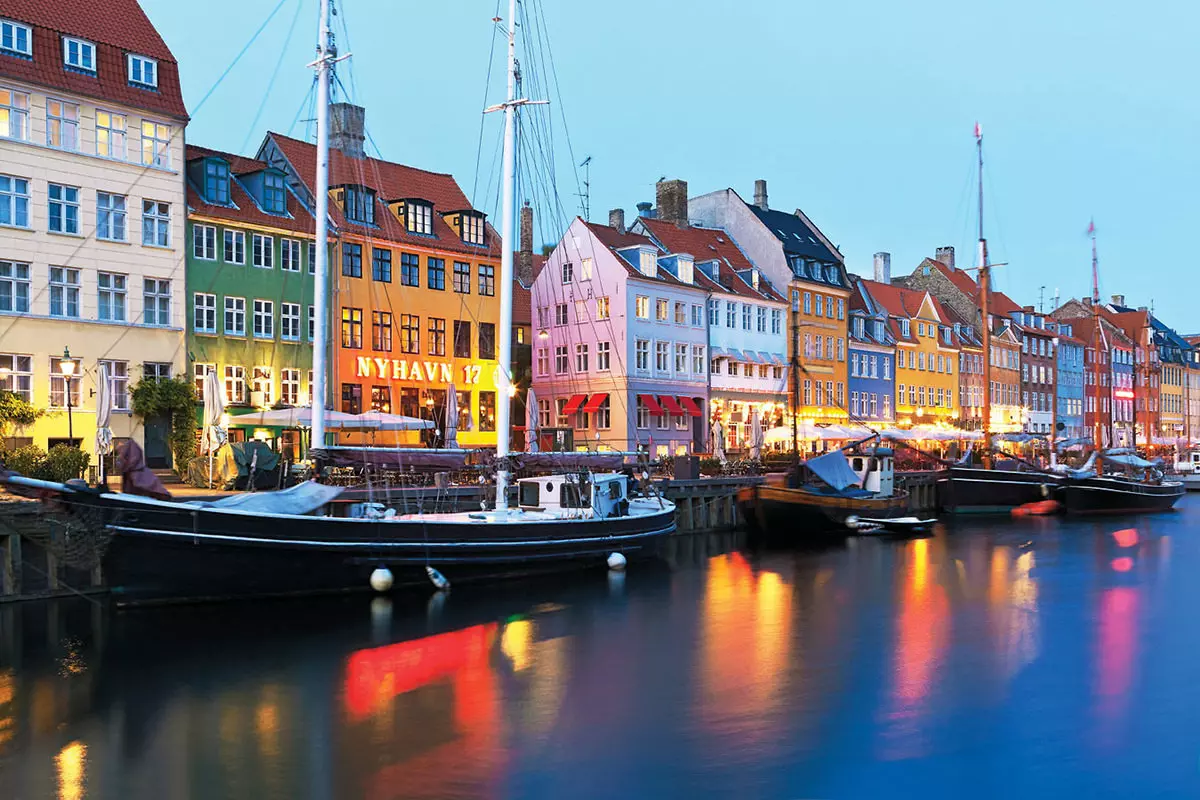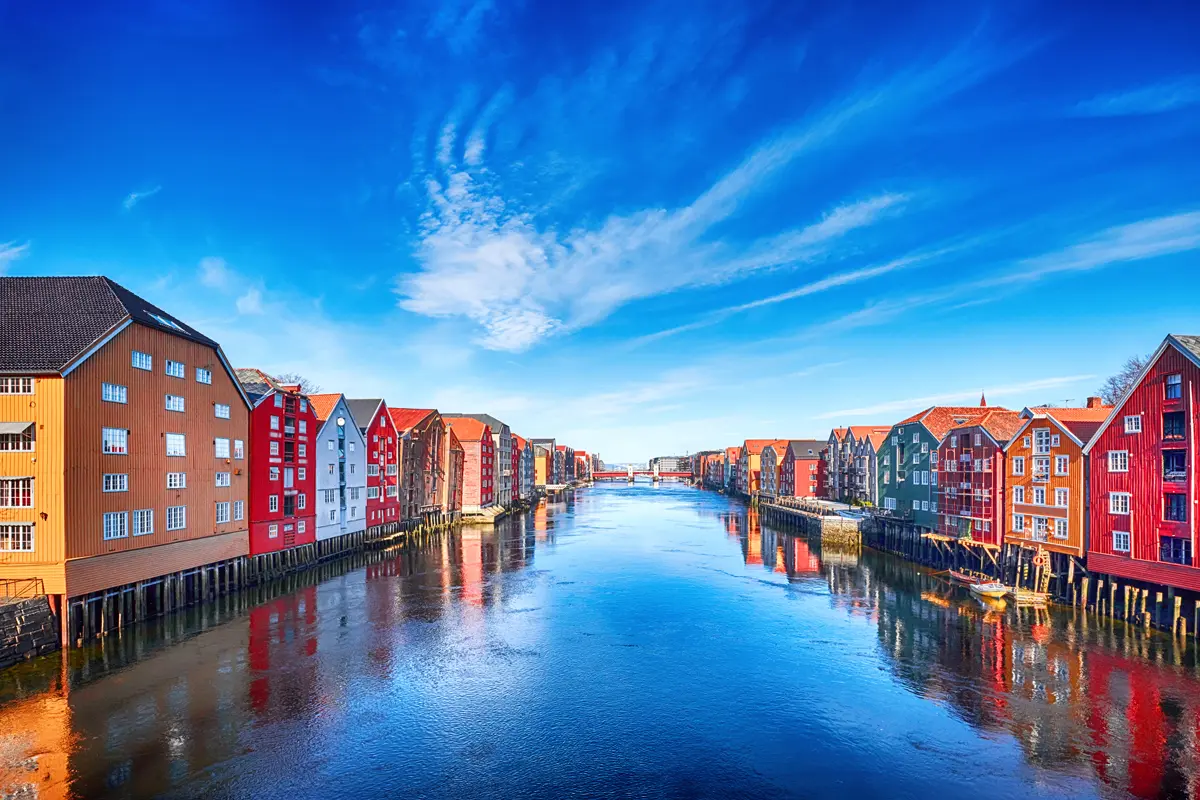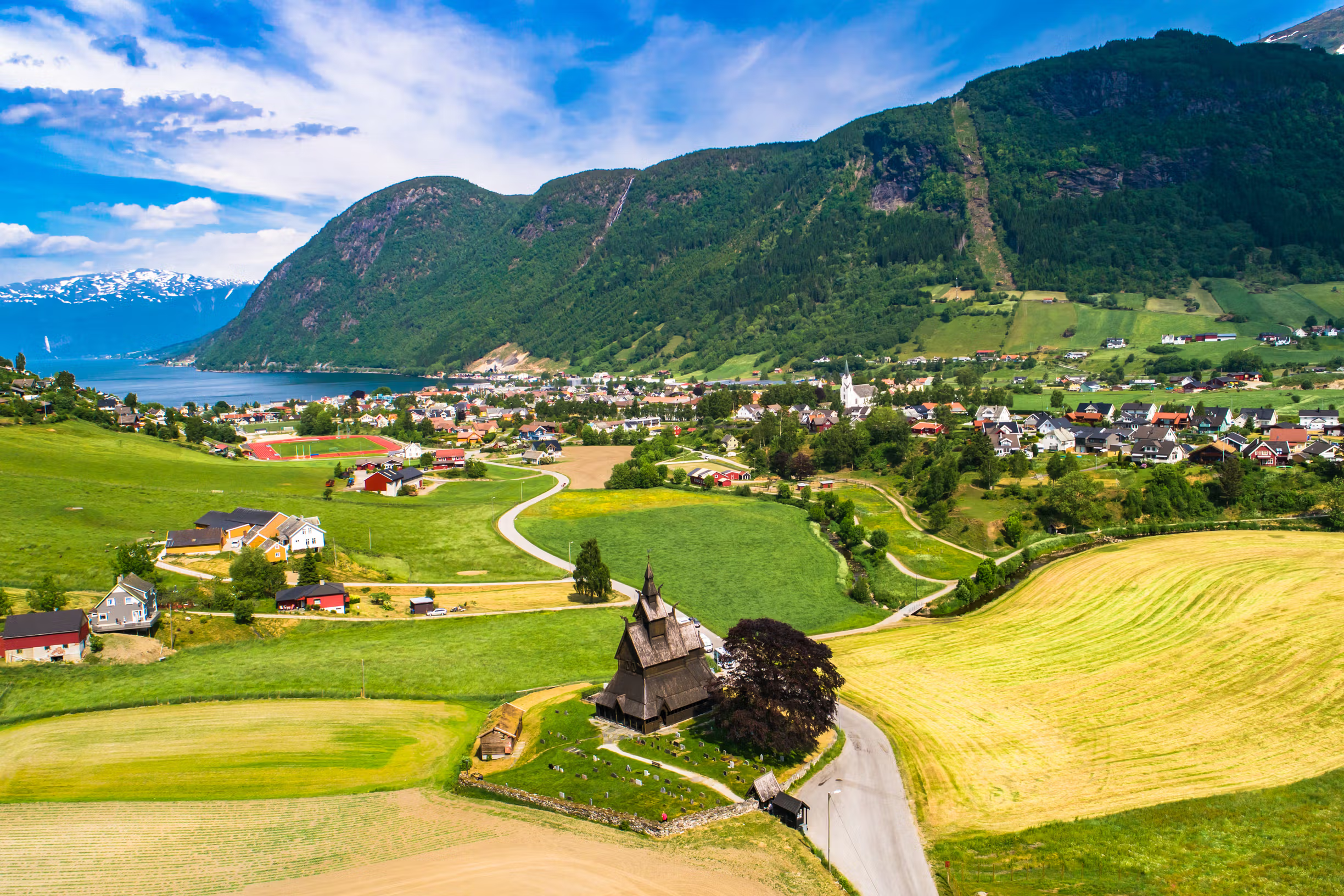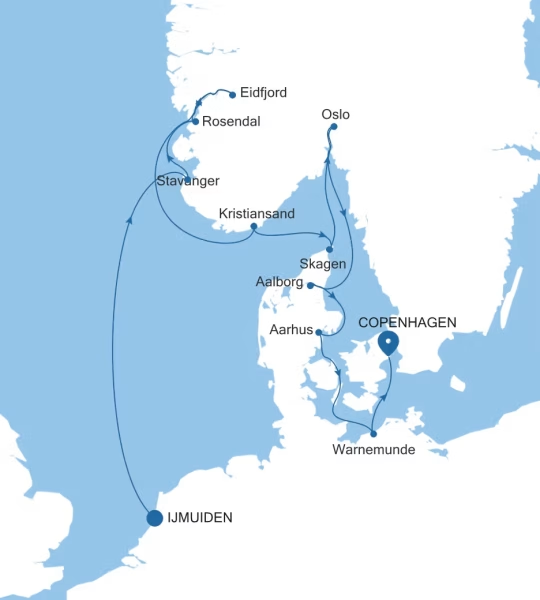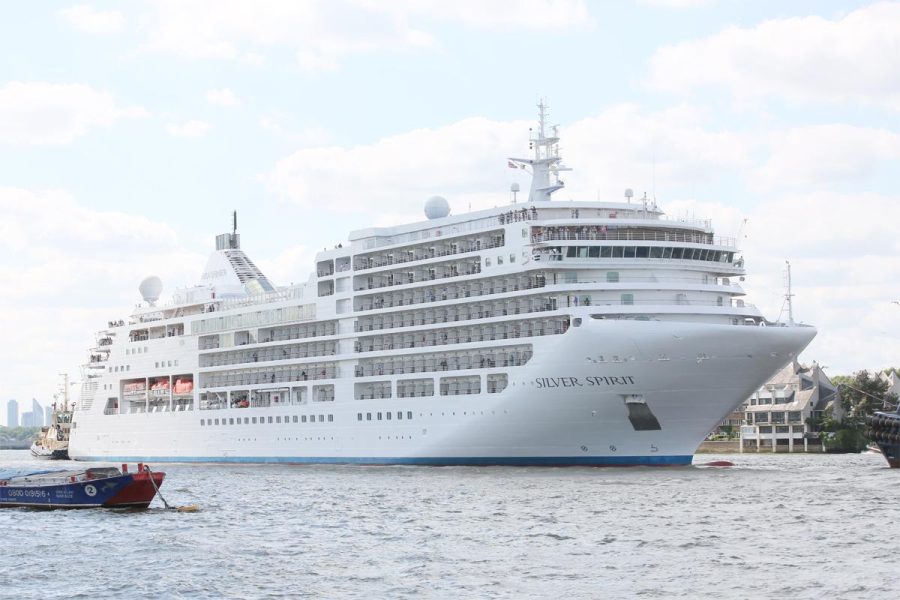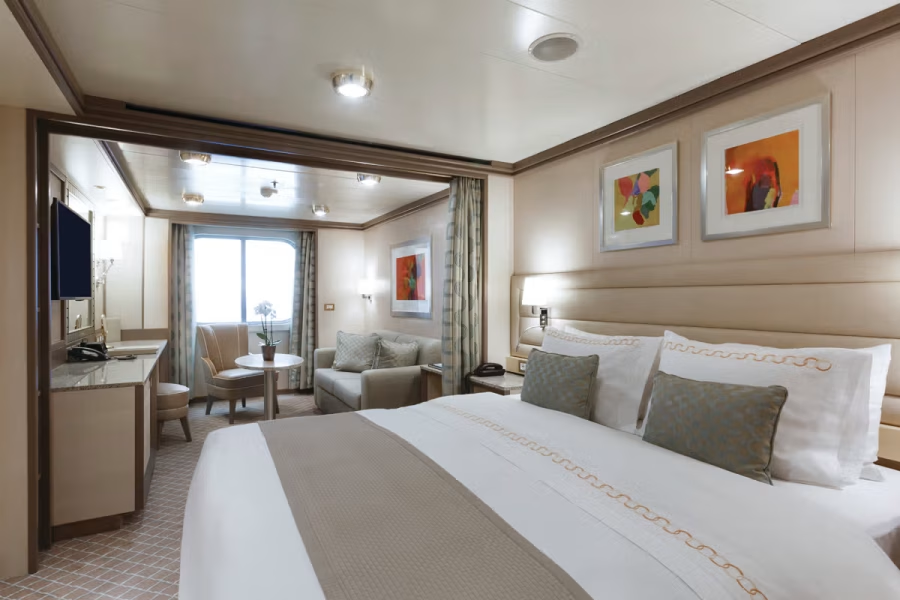DAY 1 – AMSTERDAM, NETHERLANDS
Few can resist the grand beauty of Amsterdam’s famous canals, which thread through this place of evocative beauty and thrilling contrast. Open-minded and tolerant, Amsterdam is a place for history buffs and hedonists alike, and its diverse neighborhoods have something for everyone – whether it’s the beachside relaxation of Bloemendaal, nocturnal thuds of Buiksloterham, or characterful charm of Jordaan.
160 serene canals serve as the arteries of this city, imbuing it with its unique essence. Cruise along concentric waterways, past cherry red and oak-wood cladded houseboats, as you learn of its Golden Age history. Culture is also deep in Amsterdam’s DNA, and the Van Gogh Museum – which pays tribute to the tortured genius of the Dutch post-impressionist artist – stands out among its leading museums and galleries. One of history’s greatest tragedies is also rendered in heart-breaking clarity at Anne Frank House. Visit the site where the precocious teenager hid from the Nazi regime for so long, and the room where she penned the most famous diary ever written. Compact and easily walkable, Amsterdam remains consistently postcard-perfect as you watch bright bicycles trundling over ornate bridges, and stumble across hidden, tulip-decorated courtyards.
“Gezellig” is the local word for Amsterdam’s unhurried outlook on life. No translation can quite do the concept justice, but you’ll recognize it instinctively as hours float by in a happy haze browsing De Negen Straatjes Street’s independent shops, or as you sip coffee with gooey stroopwafel. Broodje haring – a raw herring sandwich – is Amsterdam’s must-try delicacy, but many visitors find tompouce, a delicious pastry topped with vivid pink icing, a little more to their taste.
DAY 2 – DAY AT SEA
Days at sea are the perfect opportunity to relax, unwind, and catch up with what you’ve been meaning to do. So whether that is going to the gym, visiting the spa, whale-watching, catching up on your reading, or simply topping up your tan, these blue sea days are the perfect balance to busy days spent exploring shoreside.
DAY 3 – STAVANGER, NORWAY
With a pristine historic core and epic scenery all around, Norway’s energy capital is a dynamic powerhouse of the south. The city’s growth was fueled by North Sea oil exploits and industry – but this being Norway, you can prepare to visit a perhaps surprisingly charming place, surrounded by spectacular landscapes of cutting fjords, soaring mountains, and sandy beaches. With a high international population and regular youthful influxes to its university – Norway’s third-biggest city is a diverse and energetic highlight of this dramatic country. Any preconceptions of a lifeless, industrial city are instantly allayed by the colorful Øvre Holmegate Street. A gorgeous palette of candy-colored wooden shops and cafes shine brightly along this picturesque row – and you can soak in the colors and the quaint charm of a stroll along the waterfront too. Museums explore Stavanger’s industries – from oil to sardine canning – and the Viking past of one of Norway’s oldest cities. The flower-tangled, 173 white wooden houses of Gamle Stavanger are a delightful slice of preserved old Norway, and gas lamps hang over uneven cobbled streets here. Norway’s oldest church, Domkirken Cathedral, looms up impressively, having stood since the 12th century.
Stretching from the city itself, Lysefjord is one of Norway’s most striking and picturesque fjords – drenched in Viking history and mythology. Cruise the waters, or hike to the majestic Preikestolen viewpoint, where you can look out over an impossibly vast view, from a height of 604 meters. One of Norway’s most iconic and most-visited natural sites, your heart will be in your mouth as you get as close as you dare to the stunning vertical drop down to Lysefjord. It’s a long, tough hike, so why not see it from another perspective, by soaring into the skies on an unforgettable helicopter tour?
DAY 4 – ROSENDAL, NORWAY
Rosendal, with its mountains and waterfalls, is one of Norway’s more romantic villages. Cut off from the rest of the world by high mountains and the Folgefonna National Park, and home to just 800 year-round inhabitants, to say the village is in a little world of its own is no exaggeration! While Rosendal might lack for urban excitement, you certainly couldn’t want to find a more beautiful setting. Soaring mountain peaks, narrow winding fjords, impressive waterfalls, and the third-largest glacier in Norway are all par for the norm here, as are breathtaking glacier views and some of the freshest air you’ll ever experience. The village was famously a wedding present to Ludvig Holgersen Rosenkrantz’s daughter in 1658. Rosenkrantz was the wealthiest man in the country at the time, owning over 500 farms all over western Norway.
The great manor house built shortly after the wedding still stands, along with beautifully maintained gardens that were added 300 years later. The house is a wonderful reflection of the different periods’ styles of the various illustrious owners and restoration has been painstakingly carried out. The oldest rooms are still decorated as they were in the early 19th century while the library is the only 17th century room in Norway kept in its entirety, complete with the original rich French tapestry from the 1660s. No visit to this little village would be complete without a taste of local life. Pop into a tea shop for a traditional griddlecake, enjoyed amid splendid waterfront views.
DAY 5 – EIDFJORD, NORWAY
Enriched with chalky blue waters, plummeting green slopes, and gushing waterfalls – Eidfjord is a place to soak it all in, and let Norway’s natural majesty wash over you. Gulp in the crispest air while exploring plunging fjord lands, soaring mountains, and more than 4,000 years’ worth of human history. Photography enthusiasts be warned – you’ll need your widest-angle lenses to capture the staggering crumpled mountain panoramas and curving fjords here. A small cluster of compelling galleries and Nordic churches dot the quiet town of Eidfjord, but nature is unquestionably the star here. Explore it your way – whether you want to dip your hands into the cold fjord water on a zodiac, feel the wind in your hair while cycling, or walk through hazes of colorful wildflowers while crunching hiking trails.
Sometimes it’s good to feel small – and this part of Norway enjoys the kind of sweeping grandeur and scale to leave you feeling utterly humbled. Challenging hikes reward with once-in-a-lifetime views – like the cinematic vista from the precarious majestic rock plank of Trolltunga, which teeters out precariously over a 700-meter drop to the grand lake below. The thrilling thunder of Vøringsfossen Waterfall’s kinked plummet is equally moving, as you witness the waters tumbling down for 200 meters. For a more laid-back way to view the local area, jump aboard the Trolltrain, which will whisk you past the stones of a Viking burial ground, as part of a relaxed roll through the area’s history.
DAY 6 – KRISTIANSAND, NORWAY
The summer getaway of choice for Norwegians, Kristiansand basks in summer’s glow and lays down a charming welcome mat for visitors from Scandinavia and beyond. While it radiates a summery, old-time holiday charm Kristiansand is certainly no sleepy fishing village, and Norway’s fifth-largest city is a modern, green, and culturally rich city to explore. Posebyen Old Town is a delightful clutch of floral-shaded timber houses, glowing with splashes of pink blossom and carefully cultivated floral displays. Take a gentle stroll, smelling the hints of creamy white paints on the breeze, as fresh layers are ladled on by the locals, keeping the area spick and span. Kristiansand is a city fueled by culture, and a packed schedule of open-air festivals means there’s always something to celebrate or a show to see.
The spectacular waterfront Kilden Performing Arts Centre is the city’s new crown jewel – settle into your seat in this beautifully designed, golden wedge of a structure, and feel the swell of the resident orchestra reaching a stirring climax. With delicious seafood food, and plenty of shopping to boot, you’ll be in no hurry to leave – but Kristiansand is a fantastic jumping-off point for unravelling Southern Norway’s scenic coastline of quiet fishing villages and scattered skerries. Sparkling waters, forested hills, and the freshest air await as you jump aboard local ferries meandering up and down the Norwegian Riviera, navigating out to city beaches, quiet islands, and scenic fjords. Relax in a boat of your own, haul huge salmon from the depths of the waters, or settle back to soak up the Norwegian sun on the beach – there’s always something new and invigorating to enjoy in Norway’s favorite outdoor playground.
DAY 7 – SKAGEN, DENMARK
For many, Denmark’s charm might begin and end with Copenhagen. Certainly, the country’s capital is a smorgasbord of culture, canals, gastronomy, and design, but you would be foolish to end your Danish discovery there. The country is widely reputed to be the happiest place on earth and Skagen (pronounced skane) is a testament to that. Located on the very tip of the Jutland peninsula, where the North Sea meets the Baltic Sea, Skagen is a happy jumble of Scandinavian charm, a fabulous arts scene, and breathtaking nature, and has the Danish royal seal of approval to prove it! A long-time favorite of fashionable Danish holidaymakers, Skagen boats one of the most beautiful coastlines in Europe. White sand beaches espouse vast forests and the whole is something really rather lovely. The sunsets are so spectacular it is not uncommon for whole families to make the trip to the beach and actually applaud as the sun finally dips below the horizon.
The town is also home to the Rabjerg Mile, the largest migrating dune in Denmark, which covers 2 km2 and stretches up to 35 meters in height. Unsurprisingly for a place that is on the meeting point of two seas, fishing plays an important part in the local economy. Marinated herring is of course a specialty but the nutrient-rich surroundings mean that fish of all kinds is flavorsome and plentiful. This is usually washed down with a craft beer, so why not make like a local and head for the port, stake a claim at a table, and enjoy the very best little Skagen has to offer.
DAY 8 & 9 – OSLO, NORWAY
Norway’s capital is a beautiful, stirring city – where old and new blends with thoughtful harmony. You’ll find maritime history mixing with trendy art galleries and cafes, while modernist architecture meets traditional palaces and historic sites. Unafraid to reinvent and evolve, visit a former prison that’s now a stylish gathering of galleries, or the grubby docklands that is now an urban-cool hangout spot. Ever-expanding, but with a green and progressive outlook, Oslo is urban planning done right. An outdoor city, where the sun shines until late in the summer, locals swarm to its green spaces – or the surrounding countryside to embark on natural adventures amid the sprawling mountains and lakes. Oslo City Hall pays tribute to the pioneers of peace and humanity, with the Nobel Peace Prize awarded here each year, and the winners honored within. The beautiful Royal Palace caps the central Slottsplassen square and sparkles amid splashing fountains and peaceful gardens.
The city’s contemporary buildings also gleam in summer’s sunshine, with the waterside Opera House boasting a particularly evocative, forward-thinking design. Its sleek white roof slopes gently upwards from ground level, inviting visitors to rise above and admire views of the island-sprinkled harbor. Oslofjord’s islands are stacked with more museums, celebrating everything from simple folk arts to adventurous seafaring traditions. See a mighty wooden Viking ship in full, with 800 years’ worth of history etched into its wooden boughs.
DAY 10 – AALBORG, DENMARK
Denmark’s fourth biggest city comes with what Danes do best – Viking landscapes, modernist architecture, superb local food, and lots (and lots) of good beer. Starting with number one, visitors to Aalborg will need to experience the strange otherworldliness that is Lindholm Hoje. One of Scandinavia’s best preserved Viking burial sites, the impressive site was covered over by a sand dune around 1000 AD, thus preserving the stone markings. Archaeologists from the National Museum began a proper excavation of the site in 1889 but it wasn’t until 1958 that the site’s potential was fully realized. Widely considered to be the most notable of ancient landmarks in Denmark, no visit to Aalborg is complete without a visit here. History lovers will want to continue their tour of this pretty Danish town by not missing out on Voergaard Castle – one of the best-preserved Renaissance castles in Denmark. The castle houses an extensive and unique collection of European art and furniture, including works by Goya, Rubens, Raphael, and El Greco, together with treasures from the personal belongings of Napoleon 1, Louis XIV, and Marie Antoinette.
If you prefer your landscapes more urban than historical, then not to be overlooked is Aalborg’s architecture. Think a Jon Utzon (the man behind the Sydney Opera House) cultural center, one of the best concert halls in Europe and a repurposed power plant, and you have culture galore at your fingertips. If all that has made you hungry then expect a gastronomic voyage with anything from fine dining to a covered street food market. Washed down by a locally produced beer – of course! Aalborg is home to six microbreweries so visitors are spoiled for choice.
DAY 11 – AARHUS, DENMARK
Embrace the lighter side of life in Denmark’s second biggest city, where an old soul mixes with an infectious, youthful energy. Known as the “City of Smiles,” Aarhus has been grinning wider than ever since taking its turn as European Capital of Culture in 2017. Fresh influxes of eager-eyed students consistently freshen things up in this confident city of festivals and fun, which has roots stretching back to Viking times. If a morning caffeine hit is required before even considering a smile of your own, head to the city’s oldest area, the Latin Quarter. Here you can walk cobblestone streets and enjoy artisan coffee freshly ground by trendy baristas. Møllestien street has the feel of a painting come alive and is lined with a gorgeous collection of pastel-shaded cottages. If you’re feeling hungry, sink your teeth into Smørrebrød, an open-faced sandwich, served on dense rye bread and layered with anything from herring to shrimp, cheese, and meat. Danish pastries, oozing with almond paste and crafted from yeast-leavened dough – folded 27 times – are sure to satisfy any sweeter cravings. Arts and culture are a way of life here, in this city that has well and truly stepped out of Copenhagen’s shadow. Take the mesmerizing walk around Aros Aarhus Kunstmuseum’s Rainbow Panorama, where a 150-meter-long glass tunnel walkway encases you and toys with your senses, layering vibrant shocks of color across your city view. Squeezed inside the museum, you’ll find the gigantic and unsettlingly realistic crouching ‘Boy’ sculpture.
The Moesgaard Museum’s building is a work of art in itself, featuring a ramping roof that invites you up to a grassy roofscape that rises harmoniously from the landscape surrounding it. Inside lies the extraordinarily preserved, naturally mummified, body of the Iron Age-dated Grauballe Man – a famous bog body, brutally sacrificed to the fertility goddess Nerthus. Elsewhere, Den Gamle By is a living, breathing immersive history experience, where period-costumed residents jostle you along the cobbles in horse and carriage – you may even be asked to pitch in and fetch up water from the well.
DAY 12 – WARNEMUNDE (ROSTOCK), GERMANY
Imbued with wealth from their time as a Hanseatic trading power, Rostock and Warnemunde offer a bright and breezy, Baltic escape. The beachy Warnemunde resort lies close to the port, offering some of the best sands in northern Germany. Emerging from the shackles of an East German past, discover a welcoming place of festivals, sandy beaches, and colorful architecture – and a port gateway to Berlin. Warnemunde beams when the sun is shining – breathe in hearty lungfuls of salty sea air and enjoy leisurely strolls along wide bands of sandy beach. The picturesque lighthouse, dating back to 1898, adds a charming accent, while the clamshell-shaped Teepott building is an unusual leftover from the East German heritage. The old fishermen’s houses add an extra layer of colorful heritage. Stroll the waterfront, beside repurposed, painted timber warehouses. Grab a fried fish sandwich to keep you going, or settle into a beer garden with a local pils, to toast the wide waterfront views.
Don’t overlook Rostock in the dash for the beach. A larger city, it waits on the mouth of the Warnow River, and stacks of tall trading houses stand on either side of the Kropeliner Strasse street, adding a splash of vibrant color, and some excellent shopping opportunities. Wander to the pretty-in-pink City Hall and breathe in the fragrances of the blooming Botanical Gardens. The intricate astronomical clock, which dates back to the 15th century and displays exemplary, intricate craftmanship is a feature of Rostock’s St. Mary’s Church.
DAY 13 – COPENHAGEN, DENMARK
Effortlessly cool and down to earth, Copenhagen is a contemporary, clean, and classy highlight of Scandinavia. A city built to be livable, Copenhagen has refused to compromise, resulting in a forward-thinking metropolis that’s green and clean. Swim in the waters of Havnebadet Islands during summer, or shelter from winter’s bite by snuggling in beside a roaring open fire during winter. You can even hop on a train to Sweden, traversing the famous span of a Nordic Noir star – the Øresund Bridge. It takes just a touch over half an hour to step off the train in Malmö. There’s only one way to truly explore Copenhagen and that’s on two wheels. Easy bike hire schemes will get you moving across this flat city, designed with bikes at the forefront of the mind. Choose a model with electronic assistance to take the strain out of any journey, giving you the freedom to whizz around and explore the modern angular architecture of the center, and the pastoral colors of Nyhavn waterfront.
Head out to the Little Mermaid statue, inspired by Hans Christian Andersen’s fairy tale – the strikingly restrained statue is the perfect landmark for Copenhagen; unshowy, self-assured, and utterly irresistible. The Danish concept of hygge is very much alive here, and you’ll feel that warm cozy feeling as you visit cafes illuminated by the warm glow of hanging filament bulbs, and stuffed to the brim with thick, dusty books. Home to mega-brewer Carlsberg, Copenhagen is also a city for hop enthusiasts, and there is a thriving craft brewing scene to sample. Danish smørrebrød sandwiches are a must-try, or for something a little more substantial, settle in for a culinary voyage and try a taster menu – the city’s restaurants are littered with Michelin stars.


